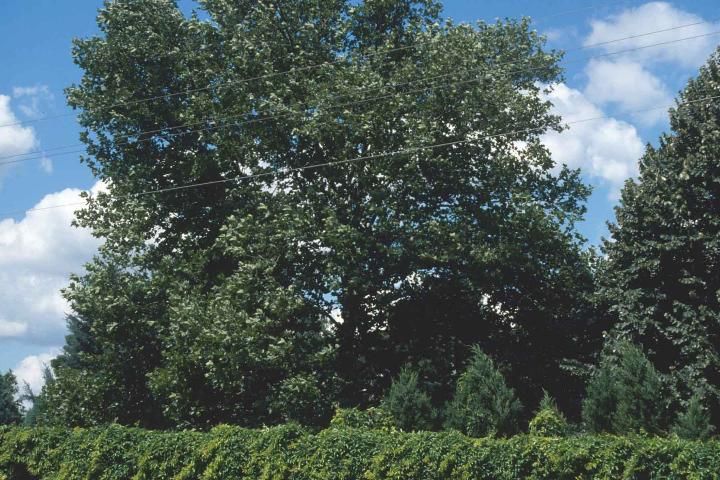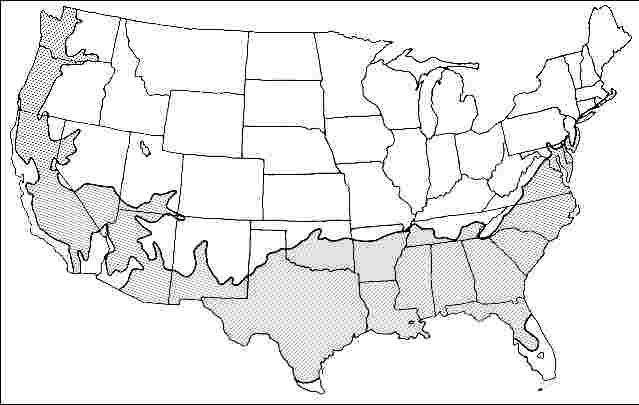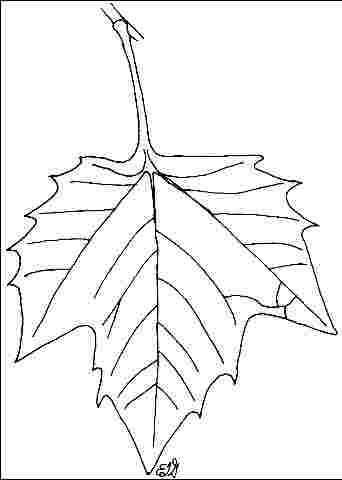Platanus orientalis: Oriental Planetree1
Introduction
Arborvitae is an easily-recognized shrub, with its large teardrop shape and flattened branchlets held vertically. Most young plants are seen as shrubs, but they can be pruned into a small tree by removing the lowest branches. This forms a distinctive vase shape and is common on older landscapes where the plant was located too close to a walk or home.

Credit: Ed Gilman
General Information
Scientific name: Platanus orientalis
Pronunciation: PLAT-uh-nus or-ee-en-TAY-liss
Common name(s): Oriental Planetree
Family: Platanaceae
USDA hardiness zones: 7A through 9A (Fig. 2)
Origin: not native to North America
Invasive potential: little invasive potential
Uses: shade
Availability: not native to North America

Description
Height: 70 to 80 feet
Spread: 50 to 70 feet
Crown uniformity: symmetrical
Crown shape: round, pyramidal
Crown density: moderate
Growth rate: fast
Texture: coarse
Foliage
Leaf arrangement: alternate (Fig. 3)
Leaf type: simple
Leaf margin: incised, lobed
Leaf shape: ovate, star-shaped
Leaf venation: palmate
Leaf type and persistence: deciduous
Leaf blade length: 4 to 8 inches
Leaf color: green
Fall color: yellow
Fall characteristic: not showy

Flower
Flower color: unknown
Flower characteristics: not showy
Fruit
Fruit shape: round
Fruit length: .5 to 1 inch
Fruit covering: dry or hard
Fruit color: brown, tan
Fruit characteristics: does not attract wildlife; showy; fruit/leaves a litter problem
Trunk and Branches
Trunk/bark/branches: branches droop; showy; typically one trunk; thorns
Pruning requirement: little required
Breakage: resistant
Current year twig color: brown
Current year twig thickness: medium
Wood specific gravity: unknown
Culture
Light requirement: full sun, partial sun or partial shade
Soil tolerances: clay; sand; loam; alkaline; acidic; occasionally wet; well-drained
Drought tolerance: high
Aerosol salt tolerance: unknown
Other
Roots: can form large surface roots
Winter interest: yes
Outstanding tree: no
Ozone sensitivity: sensitive
Verticillium wilt susceptibility: resistant
Pest resistance: sensitive to pests/diseases
Use and Management
Arborvitae does not tolerate pruning well since all foliage is toward the outside of the crown, but it is well-suited for use as a barrier, background, or specimen planting in a large landscape where it is properly located so pruning is not needed. Its distinctive appearance does not fit easily into natural or informal landscapes. It is often planted in cemeteries and referred to as Cemetery Plant.
Arborvitae grows moderately fast in full sun or very light shade and tolerates drought well once established. Sandy or loam soil is best, clay soil is only suited on a slope where drainage is good.
Available cultivars include: `Aureus', 3 to 5 feet tall, compact, golden leaves in spring, globe-shaped; `Baker', height 7 to 9 feet, bright pale green foliage, hardy in hot, dry areas; `Berckmanii', height 4 to 6 feet, compact and globe-shaped with golden-tipped branchlets; `Bonita', cone-shaped, 3 feet tall, leaves with yellow tips; `Globosa', globe-shaped dwarf; `Juniperoides', 3 feet tall, juvenile foliage needle-like, purplish foliage in fall; `Meldensis', 3 feet tall, narrow, purplish foliage in fall.
Propagation is by cuttings.
Pests and Diseases
Pest problems include spider mites and bagworms. A fungus blight causes the interior twigs to turn brown. This blight can be controlled by fungicides in early fall and by pruning out and destroying affected areas. Locate the plant in a sunny area with good air circulation to keep the foliage as dry as possible.


